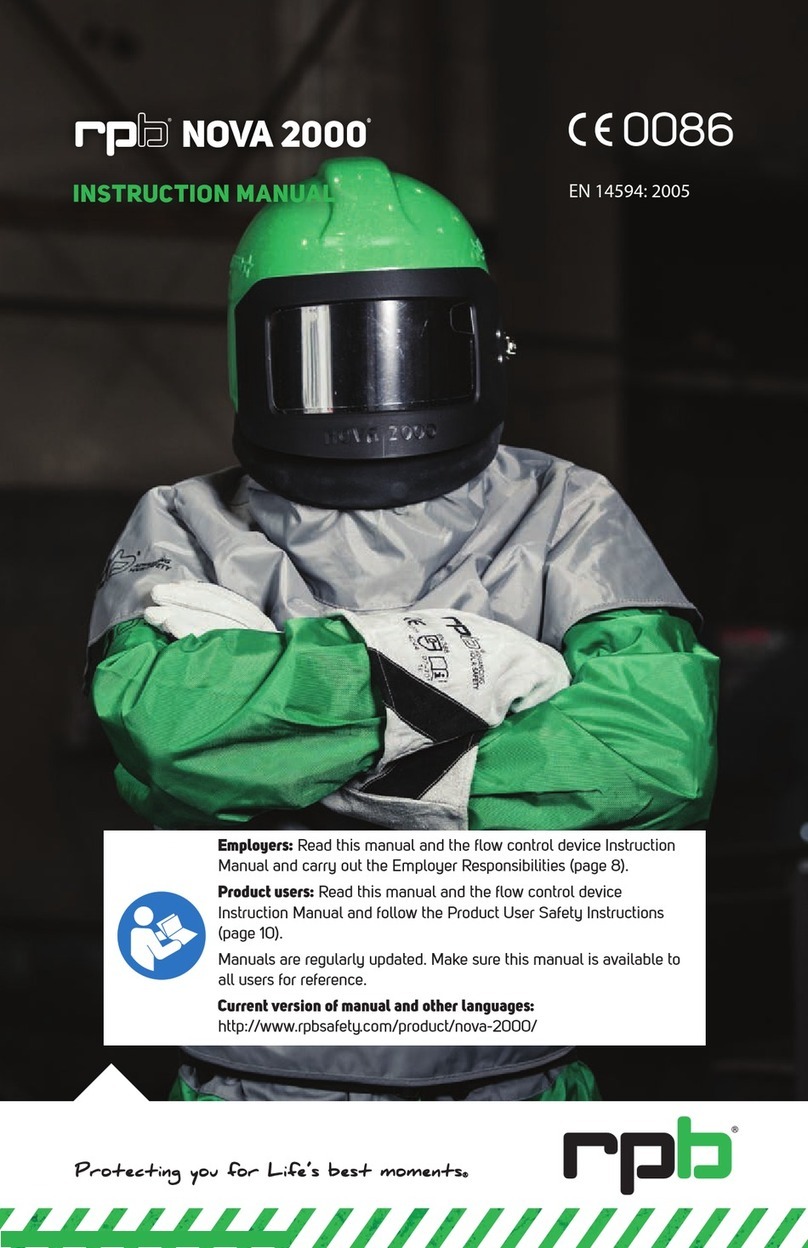
5
!WARNINGS!
1. Do not use this apparatus until you
have been trained in the apparatus
use, maintenance and limitations by
a qualied individual (appointed
by your employer) who has
extensive knowledge of the RPB®
NOVA 3 Series. All training must
be in accordance with this Users
Instruction Manual.
2. Before using this apparatus ensure
your employer has determined
that airborne contaminant
concentrations do not exceed those
allowed by applicable Government
Regulations and recommendations
for a Compressed Air line Breathing
Apparatus. It is required that the
employer measures and monitors
airborne contaminant levels in the
work area.
3. Do not wear this apparatus if any of
the following conditions exist
- Atmosphere is immediately
dangerous to your life or health
- You CAN NOT escape without
the aid of the apparatus
- Atmosphere contains less than
19.5% oxygen
- Work area is poorly ventilated
- Contaminants are in excess of
regulations or recommenda-
tions
4. Do not modify or alter this apparatus.
Use only parts and components that
are part of the EN14594 and AS/NZS
1716 approved apparatus assembly.
The use of non RPB® parts voids the
EN14594 and AS/NZS 1716 approvals
of the entire apparatus assembly.
5. Inspect all components of the
apparatus daily for signs of damage
or wear and tear that may reduce
the level of protection originally
provided.
6. Do not use silica sand or abrasives
containing silica, lead, arsenic or
sharp glass particles - use of abrasive
containing these elements could
result in serious injury or death.
7. Do not wear this apparatus until
you have passed a complete
physical exam including a lung X-ray
conducted by qualied medical
personnel.
8. Improper use of this apparatus or
use not in accordance with this User
Instruction Manual may cause injury
or death. Improper use may also cause
life threatening delayed lung diseases
such as silicosis, pneumoconiosis or
asbestosis.
9. This apparatus, when properly tted
and used, signicantly reduces but
does not completely eliminate the
breathing of contaminates by the
apparatus wearer.
10. Be certain your employer has
determined that the breathing air
source provides at least EN12021,
AS/NZS 1715 breathable air. The
apparatus must be supplied with
clean breathable air at all times. For
supplied air it is recommended that
a carbon monoxide monitor be used




























